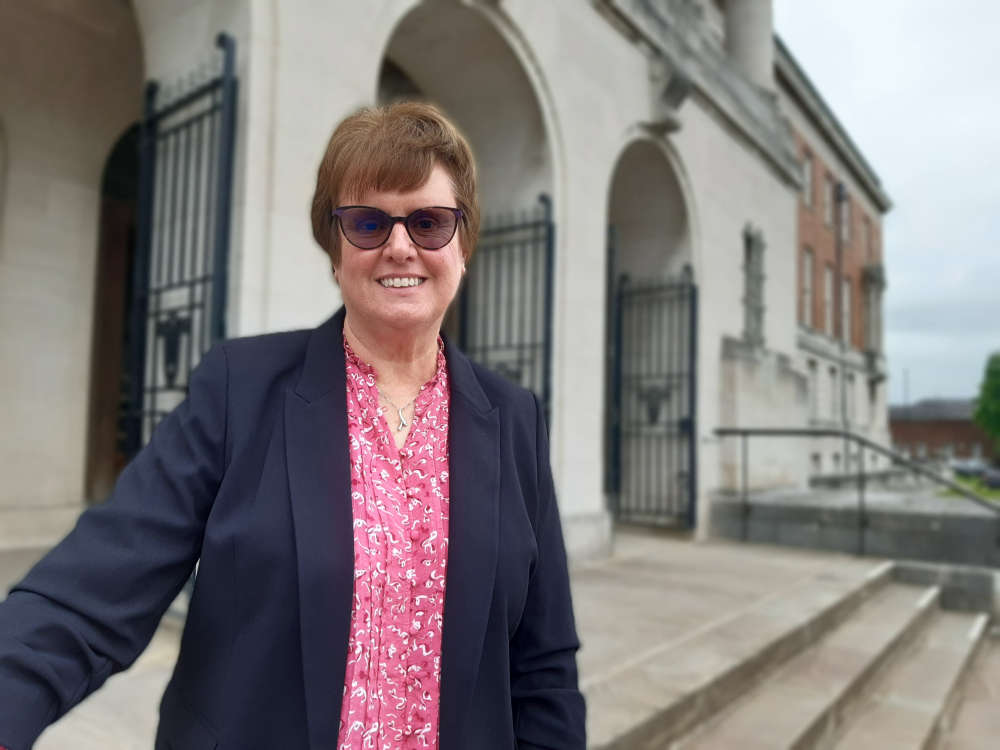
Thousands of Derbyshire residents have only a matter of days to have their say during two consultations on possibly the biggest planned changes to Local Government in more than 50 years that will reshape the delivery of vital services.
The Labour Government’s Local Government Reorganisation White Paper proposals include potentially setting up single, unitary authorities across England with an elected mayor in counties by merging or scrapping councils in two-tier authority areas like Derbyshire that operate county, and then district and borough councils.
Derbyshire County Council has recently opted to echo the county”s eight district and borough councils, and Derby City Council with similar proposals for the Government to consider implementing two separate north and south unitary councils for the county but the exact form this may take is still being debated and is undecided.
But in the meantime residents can take part in a consultation organised by district and borough councils with an August 10th deadline while a separate county council consultation will run until August 19th.
The borough and district council leaders stated: “The current structure of Local Government dates back to 1974 and the way we live our lives
and the technologies we all use have changed drastically over half a century.
“By working together, we have developed a proposal for two councils that are big enough to deliver across large areas, but close enough to meet the differing needs of a diverse county.
“We’re delighted to see so many people using the consultation to respond to the ideas that we have put forward, which is a clear sign of how important this is. We would urge more people to have their say before it closes on Sunday, August 10th.”
Eight borough and district councils in Derbyshire currently deliver services including leisure, planning, waste collection and housing.
Derby City Council already provides all its services to the city as a unitary authority, and Derbyshire County Council currently delivers a range of services across the whole county outside the city such as education, social care, highways and transport, trading standards and public health.
Under the new proposals, the council for northern Derbyshire and the council for southern Derbyshire would deliver all services in their area, with the city becoming part of the council for southern Derbyshire.
The city, borough and district councils have argued that one Unitary Authority for Derbyshire will not work because of the size of the county but a system with a north council and a south council operation will maintain the historic areas of the county and provide better opportunities to work in partnerships especially with the East Midlands Combined County Authority.
They have also argued one, single unitary authority would create an inefficient delivery of services, would stifle economic and housing growth and create a disparity between Derbyshire and Derby in terms of population and tax base.
Chesterfield Borough Council’s Leader, Cllr Tricia Gilby, has stressed the options under the ‘One Derbyshire, two councils’ system maintain the historic areas of Derbyshire with manageable right sizes and provide an opportunity to work in partnership with others.
Three options under the districts and boroughs’ ‘One Derbyshire, two councils’ proposal include placing Amber Valley Borough Council entirely in the northern council, or entirely in the southern council or divided between the two.
Derbyshire County Council recently voted by a majority to agree in principle to opt for a new, similar two-layer proposed set up with a north council and south council split.
It has outlined three options under the north and south split proposal as Options A, B and C as below:
- Option A – Two councils with Amber Valley in the north – The boundary for each council would follow existing district boundaries with Amber Valley in the northern council area along with High Peak, Derbyshire Dales, North East Derbyshire, Bolsover and Chesterfield;
- Option B – Two councils with Amber Valley in the south – The boundary for each council would follow existing district boundaries with Amber Valley in the southern council area along with Erewash, South Derbyshire and Derby City;
- Option C – Two councils with a new boundary – A new boundary would be created with parts of Amber Valley and Derbyshire Dales in the northern council area along with High Peak, North East Derbyshire, Bolsover and Chesterfield. Other parts of Amber Valley and Derbyshire Dales would be included in the southern council area along with Erewash, South Derbyshire and Derby City.
However, some opposition councillors have raised concerns that the county council’s LGR plans could harm more rural areas like the Derbyshire Dales and towns like Ashbourne that could end up being left behind and banded into the Derby City area.
But County Council Leader Alan Graves told a recent Full Council meeting that it was important to be able to engage in the process and the authority’s latest proposal would allow the council to influence on-going decision-making with the Government.
Cllr Graves has stated: “The new option would still mean reducing the number of councils in Derby and Derbyshire from 10 to two, but with one covering the northern half of the county and a separate council covering Derby and the south.
“It’s vital that we take the time to look at all options to get this right and leave residents and businesses with a Derbyshire that really works for them.”
The districts and borough councils have acknowledged the county council’s formal position to look at options based on having two councils in the county.
Borough and district council leaders stated: “Our priority is to achieve the best outcome for our communities, and the views of local people will help shape our final proposal to Government. This must be submitted in November, so we must continue to work at pace.
“As part of our ongoing work, we will continue to consider how Derbyshire’s 10 councils can work together to make sure people and places are at the heart of Local Government Reorganisation in the county.”
The district and borough councils’ public consultation is available online at https://bit.ly/Derbyshire-consultation after it began at the end of June and lasts until August 10th
Derbyshire County Council’s questionnaire is also available online at www.derbyshire.gov.uk/councils with a closing date for completion on August 19th.
The views of people and organisations will feed into the development of final proposals which must be considered by existing councils and submitted to the Government by November 28th.
The Government will review the proposals for Derbyshire, and for twenty other county areas across England, before making final decisions in the summer of 2026.
If the Government accepts the proposals for Derbyshire, elections for the new shadow authorities are expected to take place in May 2027 and new councils would be expected to start to operate by April 1st, 2028.
The Government has argued that LGR plans will include elected mayors with more powers on planning and transport, and that the changes will create savings, create greater efficiency, improve public services, and support economic growth.
But critics are concerned about the loss of district and borough councils, a risk of greater Government control, the removal of local decision-making, tax increases, powers being taken away from communities and some also doubt the plans will create savings.
Early forecasts suggest that a new structure of Local Government in Derbyshire could save between £56m and £93m over five years, through reduced duplication of services, fewer council buildings, fewer councillors and senior officers, and by being able to achieve better economies of scale when buying and delivering services.
Derbyshire’s eight district and borough councils include Amber Valley Borough Council, Bolsover District Council, Chesterfield Borough Council, Derbyshire Dales District Council, Erewash Borough Council, High Peak Borough Council, North East Derbyshire District Council, and South Derbyshire District Council, as well as Derby City Council.


 Space race! Borough Council offers R&D boost for satellite and F1 firm
Space race! Borough Council offers R&D boost for satellite and F1 firm
 New Chief Executive recommended by Derbyshire County Council
New Chief Executive recommended by Derbyshire County Council
 Change to Employment Rights Bill a ‘step forward’ says Chamber
Change to Employment Rights Bill a ‘step forward’ says Chamber
 PCC urges residents to leave e-scooters off the shopping list
PCC urges residents to leave e-scooters off the shopping list




